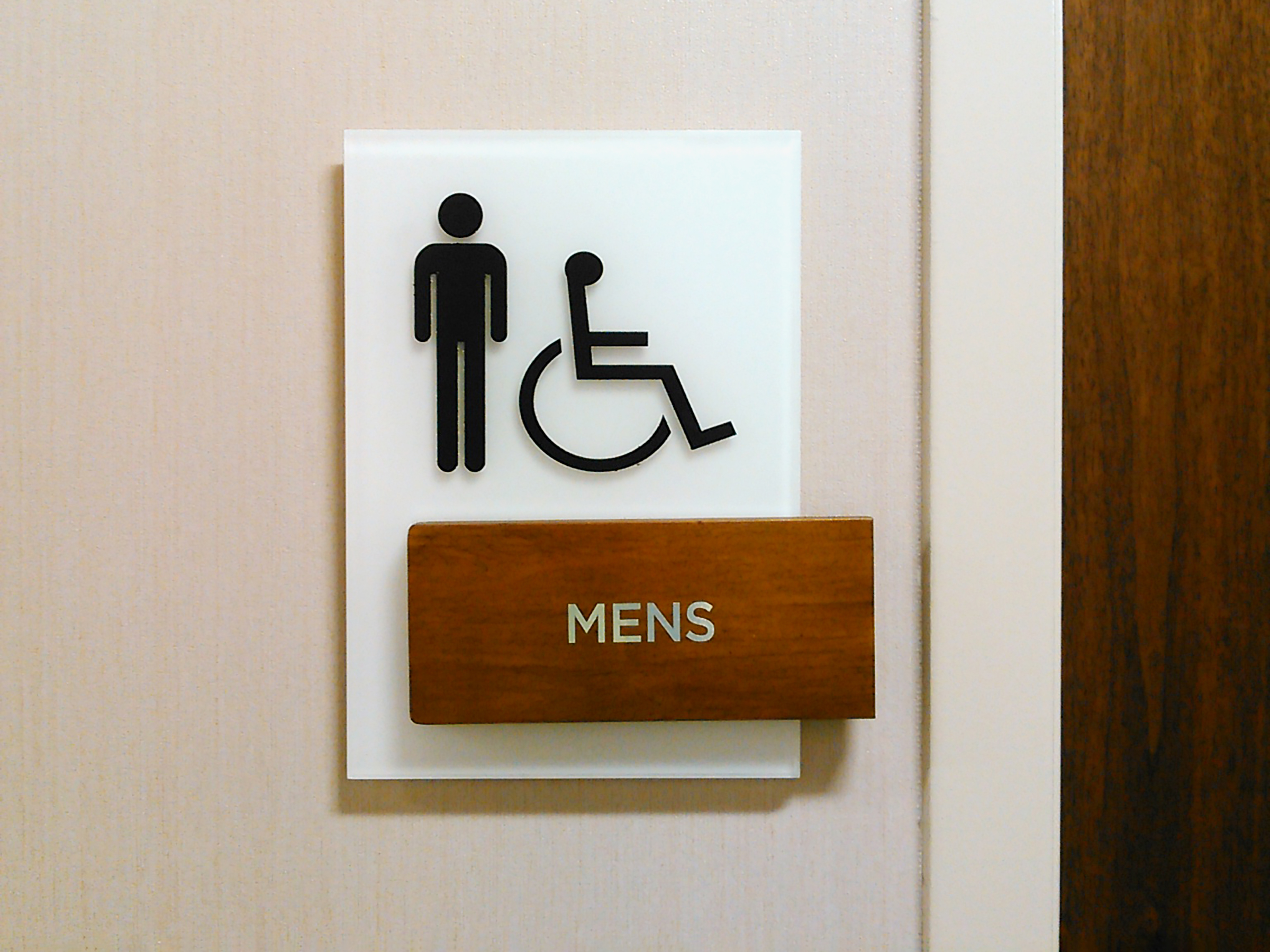The Function of ADA Signs in Abiding By Availability Requirements
The Function of ADA Signs in Abiding By Availability Requirements
Blog Article
Exploring the Trick Attributes of ADA Signs for Enhanced Access
In the world of ease of access, ADA indicators offer as quiet yet powerful allies, making certain that areas are accessible and inclusive for people with handicaps. By incorporating Braille and responsive components, these indications damage barriers for the aesthetically impaired, while high-contrast color schemes and readable fonts provide to varied visual requirements.
Importance of ADA Compliance
Making certain compliance with the Americans with Disabilities Act (ADA) is vital for fostering inclusivity and equal accessibility in public rooms and workplaces. The ADA, enacted in 1990, mandates that all public centers, companies, and transport services accommodate individuals with specials needs, guaranteeing they appreciate the very same legal rights and possibilities as others. Compliance with ADA standards not only satisfies legal responsibilities but likewise enhances an organization's credibility by showing its commitment to variety and inclusivity.
One of the key aspects of ADA compliance is the implementation of easily accessible signage. ADA signs are created to make sure that individuals with impairments can easily browse via areas and buildings.
In addition, sticking to ADA regulations can mitigate the danger of legal consequences and potential fines. Organizations that fail to adhere to ADA guidelines might deal with penalties or legal actions, which can be both damaging and economically burdensome to their public photo. Thus, ADA conformity is integral to promoting an equitable atmosphere for every person.
Braille and Tactile Aspects
The unification of Braille and tactile aspects right into ADA signs embodies the principles of availability and inclusivity. It is commonly placed underneath the equivalent message on signs to guarantee that individuals can access the details without aesthetic aid.
Tactile elements expand past Braille and consist of elevated signs and characters. These components are designed to be noticeable by touch, permitting people to determine space numbers, washrooms, exits, and other critical locations. The ADA establishes particular guidelines concerning the size, spacing, and positioning of these tactile elements to maximize readability and make sure consistency throughout different settings.

High-Contrast Shade Schemes
High-contrast shade plans play a pivotal duty in improving the presence and readability of ADA signage for people with visual impairments. These plans are important as they make the most of the distinction in light reflectance between message and background, guaranteeing that indicators are easily noticeable, even from a range. The Americans with Disabilities Act (ADA) mandates using certain color contrasts to fit those with limited vision, making it a critical aspect of conformity.
The efficacy of high-contrast colors depends on their ability to stick out in various illumination problems, including poorly lit settings and areas with glow. Typically, dark text on a light history or light text on a dark background is utilized to attain optimal comparison. Black message on a white or yellow history gives a stark visual difference that helps in fast acknowledgment and comprehension.

Legible Fonts and Text Dimension
When taking into consideration the style of ADA signage, the choice of legible typefaces and ideal message size can not be overstated. The Americans with Disabilities Act (ADA) mandates that typefaces have to be sans-serif and not italic, oblique, manuscript, highly decorative, or of uncommon form.
The dimension of the message likewise plays a critical role in accessibility. According to ADA standards, the minimum text elevation ought to be 5/8 inch, and it should raise proportionally with checking out distance. This is especially vital in public areas where signage needs to be reviewed rapidly and accurately. Uniformity in text dimension contributes to a natural visual experience, assisting people in navigating atmospheres successfully.
Moreover, spacing in between lines and letters is integral to clarity. Adequate spacing stops characters from appearing crowded, improving readability. By sticking to these standards, designers can significantly enhance accessibility, making sure that signs serves its designated objective for all individuals, regardless of their aesthetic capabilities.
Efficient Positioning Approaches
Strategic placement of ADA signs is crucial for making best use of ease of access and making sure conformity with lawful standards. Correctly located indicators guide individuals with impairments successfully, promoting navigating in public spaces. Key considerations consist of height, presence, and proximity. ADA standards specify that indicators need to be placed at an elevation in between 48 to 60 inches from the ground to guarantee they are within the line of view for go both standing and seated people. This typical elevation array is critical for inclusivity, enabling mobility device customers and people of differing elevations to gain access to info effortlessly.
Furthermore, indications should be put beside the latch side of doors Full Report to allow very easy recognition prior to access. This placement aids individuals locate areas and areas without obstruction. In instances where there is no door, indications should be positioned on the nearby adjacent wall surface. Consistency in sign positioning throughout a facility boosts predictability, minimizing confusion and boosting general customer experience.

Conclusion
ADA indications play an essential role in advertising access by integrating functions that resolve the needs of individuals with specials needs. Including Braille and tactile elements makes sure essential information is easily accessible to the visually damaged, while high-contrast color schemes and readable sans-serif typefaces boost visibility across various lighting conditions. Efficient positioning methods, such as ideal mounting heights and strategic locations, even more help with navigation. These components jointly cultivate a comprehensive environment, underscoring the significance of ADA compliance in guaranteeing equal gain access to for all.
In the world of access, ADA indicators serve as silent yet effective allies, making certain that areas are comprehensive and accessible for individuals with disabilities. The ADA, established in 1990, mandates that all public centers, employers, and transportation solutions fit people with handicaps, Read Full Report ensuring they delight in the same civil liberties and chances as others. ADA Signs. ADA signs are made to make sure that individuals with handicaps can quickly navigate via buildings and spaces. ADA standards stipulate that indicators ought to be mounted at a height in between 48 to 60 inches from the ground to ensure they are within the line of view for both standing and seated people.ADA signs play an important role in advertising ease of access by incorporating functions that address the demands of individuals with handicaps
Report this page